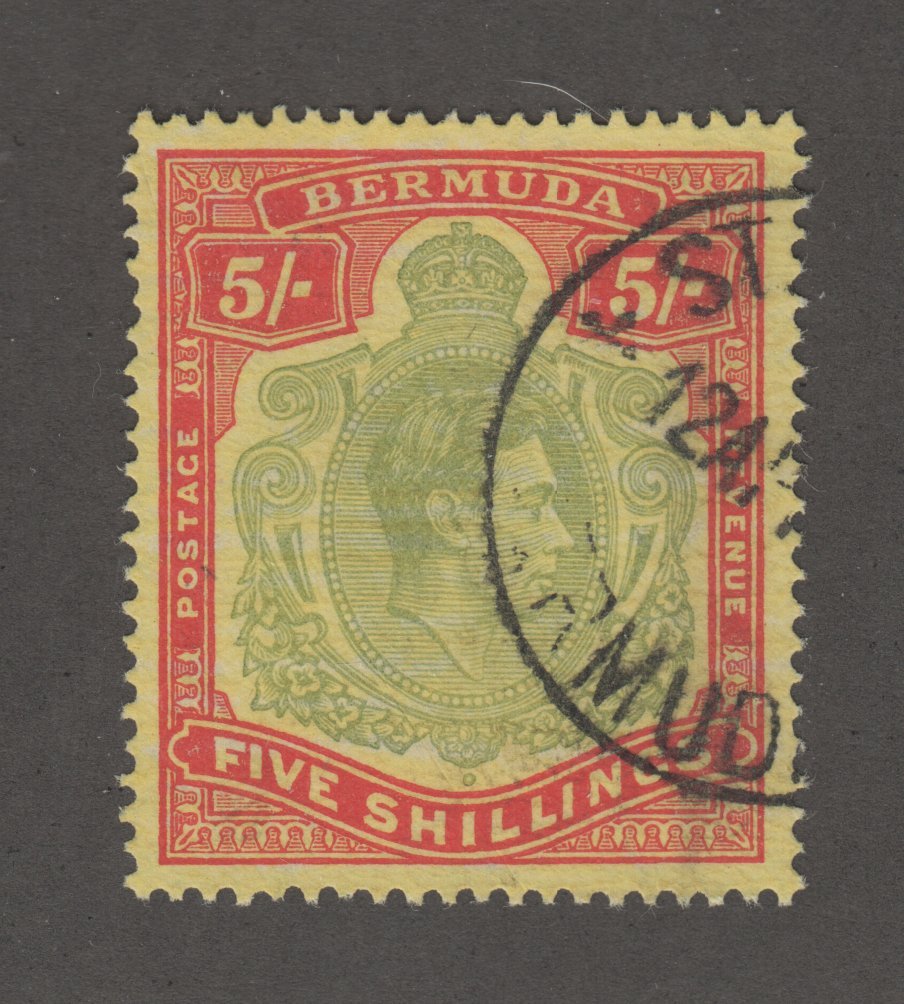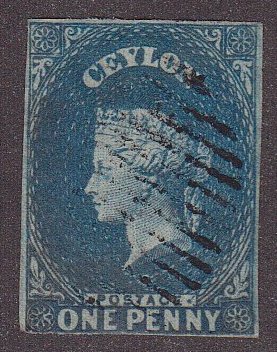
Discussion - Member to Member Sales - Research Center

Discussion - Member to Member Sales - Research Center

08:04:59pm
Thanks in advance.
Kelly

Login to Like
this post
Hi Kelly;
I don't know the answer to that one, however many years ago I read about a bunch of paper samples showing all the different kinds that there are. They were intended for stamp collectors to help with identifying. I'll try to research this if I can and post on here what I find out.
Cheers
Ken Tall Pines

Login to Like
this post
11:05:53pm
Thanks Ken, I appreciate that.

Login to Like
this post

04:51:05am
China Clay paper is paper that is coated with a fine chalk and usually passed between rollers that makes the surface smooth or somewhat glossy. I think that to be sure a stamp suspected of being on china paper needs a certificate.
Chalky paper is supposed to show a black pencil like mark when a pure silver pin is drawn on it.

1 Member
likes this post.
Login to Like.
For U.S.stamps that designation is considered to be an interesting paper variety, not particularly valuable in and by itself to the general collector. Specialist collectors on the other hand may well consider them very desirable. In Scott's cat.#'s 331b-332b and 333a-340a have been removed from their listing.
Best,
Dan C.

Login to Like
this post
Good Morning Kelly,
The following is probably more than you want or need, but maybe you can use for future reference. From my research, there are 2 main sources for paper types, one is by R. H. White and I believe it is Volume 5 of his Encyclopedia of Colors and the one I have is The Stamp Specialist, Number Four, published in 1940. That particular volume has a very good article on paper types and paper samples of all the types. Following, are the different types of paper mentioned in the article. The author also gives stamp samples with Scott numbers to match the paper type. Following are the most common:
Laid Paper - Brazil, 300r Purple/Brown #420 and Afghanistan, 20p Red #267
Pelure Paper - Bulgaria 10s Red #39 and Latvia 5k Carmine #10
Chalk Paper - Russia 7k Brown #382 and Hong-Kong 2c Gray/Green #75
Quadrille Paper - Honduras Iron 2r Green #7
Granite Paper - Unite States 2c Int. Rev. #R15
Glazed Paper - India 4a Black #9 and India-Barwani 1a Red #8
Thin Paper (Pelure Type) - Rodesia 1/2p Blue& Verm. #1 and Bolivia 1c Bistre #40
Thick Chalk Paper - India-Kishengarh 1/4a Pale Blue #38
Granite Paper - Austria 1kr Dark Grey #51 and Japan 1/2s Brown #127
There are others, but will leave them for another time. Remember that this article was published in 1940, so some of the Scott Numbers may have changed. The author, James H. Obrig does not mention China Clay paper, so your original question was not answered, but I am sure that there are others on SOR who know much more than I, who can answer your question.
Paper types along with colors are a never ending saga. 
Mel

4 Members
like this post.
Login to Like.
Caveat emptor--I claim NO expertise for identifying these specialized varieties. But my reference copy of a US specialized catalogue is the 2002 edition, which unlike Dan's copy still has the a/b varieties of numbers 331-340. In that section Scott offered this explanation, which may also apply to your French stamps:
"China Clay Paper: A small quantity of Nos. 331-340 was printed on paper containing a high mineral content (5-20%), instead of the specified 2%. The minerals, principally aluminum silicate, produced China clay paper. It is thick, hard and grayish, often darker than 'bluish' paper." (pg. 51)
Hopefully this adds some clarity to the discussion?

1 Member
likes this post.
Login to Like.
A Service Dog gives a person with a disability independence. Never approach, distract or pet a working dog, especially when (s)he is in harness. Never be afraid to ask questions to the handler (parent).
27 Jun 2014
08:04:59pm
While I'm laid up, I've been working on translating the History of Belgian Postage Stamps from French to English. I keep coming across the phrase "china paper". Can anyone elaborate on that? Is it a distinct paper type like pelure?
Thanks in advance.
Kelly

Login to Like
this post

re: Paper Types?
Hi Kelly;
I don't know the answer to that one, however many years ago I read about a bunch of paper samples showing all the different kinds that there are. They were intended for stamp collectors to help with identifying. I'll try to research this if I can and post on here what I find out.
Cheers
Ken Tall Pines

Login to Like
this post
A Service Dog gives a person with a disability independence. Never approach, distract or pet a working dog, especially when (s)he is in harness. Never be afraid to ask questions to the handler (parent).
27 Jun 2014
11:05:53pm
re: Paper Types?
Thanks Ken, I appreciate that.

Login to Like
this post
Silence in the face of adversity is the father of complicity and collusion, the first cousins of conspiracy..
28 Jun 2014
04:51:05am
re: Paper Types?
China Clay paper is paper that is coated with a fine chalk and usually passed between rollers that makes the surface smooth or somewhat glossy. I think that to be sure a stamp suspected of being on china paper needs a certificate.
Chalky paper is supposed to show a black pencil like mark when a pure silver pin is drawn on it.

1 Member
likes this post.
Login to Like.

re: Paper Types?
For U.S.stamps that designation is considered to be an interesting paper variety, not particularly valuable in and by itself to the general collector. Specialist collectors on the other hand may well consider them very desirable. In Scott's cat.#'s 331b-332b and 333a-340a have been removed from their listing.
Best,
Dan C.

Login to Like
this post

Approvals
re: Paper Types?
Good Morning Kelly,
The following is probably more than you want or need, but maybe you can use for future reference. From my research, there are 2 main sources for paper types, one is by R. H. White and I believe it is Volume 5 of his Encyclopedia of Colors and the one I have is The Stamp Specialist, Number Four, published in 1940. That particular volume has a very good article on paper types and paper samples of all the types. Following, are the different types of paper mentioned in the article. The author also gives stamp samples with Scott numbers to match the paper type. Following are the most common:
Laid Paper - Brazil, 300r Purple/Brown #420 and Afghanistan, 20p Red #267
Pelure Paper - Bulgaria 10s Red #39 and Latvia 5k Carmine #10
Chalk Paper - Russia 7k Brown #382 and Hong-Kong 2c Gray/Green #75
Quadrille Paper - Honduras Iron 2r Green #7
Granite Paper - Unite States 2c Int. Rev. #R15
Glazed Paper - India 4a Black #9 and India-Barwani 1a Red #8
Thin Paper (Pelure Type) - Rodesia 1/2p Blue& Verm. #1 and Bolivia 1c Bistre #40
Thick Chalk Paper - India-Kishengarh 1/4a Pale Blue #38
Granite Paper - Austria 1kr Dark Grey #51 and Japan 1/2s Brown #127
There are others, but will leave them for another time. Remember that this article was published in 1940, so some of the Scott Numbers may have changed. The author, James H. Obrig does not mention China Clay paper, so your original question was not answered, but I am sure that there are others on SOR who know much more than I, who can answer your question.
Paper types along with colors are a never ending saga. 
Mel

4 Members
like this post.
Login to Like.
08:37:13pm
re: Paper Types?
Caveat emptor--I claim NO expertise for identifying these specialized varieties. But my reference copy of a US specialized catalogue is the 2002 edition, which unlike Dan's copy still has the a/b varieties of numbers 331-340. In that section Scott offered this explanation, which may also apply to your French stamps:
"China Clay Paper: A small quantity of Nos. 331-340 was printed on paper containing a high mineral content (5-20%), instead of the specified 2%. The minerals, principally aluminum silicate, produced China clay paper. It is thick, hard and grayish, often darker than 'bluish' paper." (pg. 51)
Hopefully this adds some clarity to the discussion?

1 Member
likes this post.
Login to Like.

